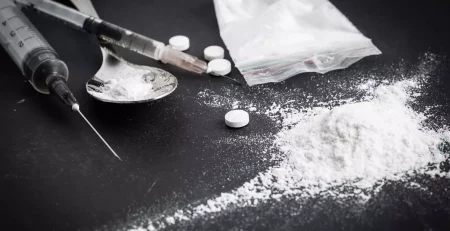How Long Does Fentanyl Stay in Your System?
A Timeline for Fentanyl Detox, Withdrawal, and Recovery
Like a home cluttered with the remnants of a long, harsh winter, your life may feel overwhelmed by the chaos of fentanyl addiction and with worries of how long does fentanyl stay in your system. But as we welcome the rejuvenating spirit of spring, we invite you to embrace the opportunity for renewal and transformation.
Imagine a thorough spring cleaning. It’s not about surface tidying but deep, meticulous cleaning, reaching into every corner. You address all the cobwebs and clutter.
That’s what overcoming addiction is like. It’s about addressing not the addiction itself but the underlying issues. Think of the hidden corners of your life that have contributed to where you are now. And like a clean, fresh house is a joy to live in, a life free of addiction is about renewal.
With Icarus Behavioral Health, you’ve found the right place to start this journey.
What Is Fentanyl?

Fentanyl is a synthetic, similar to morphine. But the National Institute on Drug Abuse cautions that it is 50 to 100 times more potent. Pharmaceutical fentanyl is a prescription medication for treating severe pain. Its active substance can help terminally ill cancer patients or others suffering from intense, chronic pain.
Fentanyl works by binding to opioid receptors in the brain and spinal cord. These receptors are part of the body’s pain control system. When fentanyl binds to these receptors, it blocks pain signals and releases a surge of dopamine.
24 Hour Fentanyl Detox and Rehab Helpline
How Does Fentanyl Work to Treat Severe Pain Legally?
Fentanyl is a potent opioid medication for severe pain management. When prescribed, it has clinical value. It comes in several different forms, each delivering the medication in a specific way:
- Transdermal Fentanyl Patches: A Fentanyl patch goes directly on the skin. Transdermal patches slowly release fentanyl into the body through the skin for 48 to 72 hours. A transdermal patch is typically the best way to manage chronic pain in patients requiring long-term use.
- Lozenges and Lollipops: Fentanyl is also available as a lozenge or a “lollipop” that is absorbed through the mucous membranes in the mouth.
- Oral Fentanyl Tablets: These tablets are placed under the tongue and dissolve to deliver fentanyl directly into the bloodstream. Like the lozenges, they are often used for cancer pain.
- Nasal Sprays: As the name implies, a nasal spray is administered into the nose.
- Injectable Fentanyl: An injectable solution is intended for hospital settings, often for pain management after surgery or for pain in patients tolerant to other drugs.
Each form of fentanyl has specific uses and is prescribed based on the patient’s pain relief needs. It’s important to note that all forms of fentanyl are potent and risk addiction and overdose, so they should be used only as directed by a healthcare provider.
Illicit Fentanyl Abuse
But in the hands of illicit drug manufacturers and dealers, powder form fentanyl is mixed with other drugs like heroin or cocaine. Dealers do this to increase the potency of these drugs – drug abuse is good for their business.
But that also amplifies risks, like overdose and death. The user often isn’t aware of fentanyl in illicit drugs. As a result, it often leads to accidental overdoses due to the drug’s extreme potency.
What Causes Fentanyl or Opioid Addiction?
Fentanyl addiction can occur when someone uses the drug repeatedly. That use causes the brain’s opioid receptors to become accustomed to its presence. Over time, the brain adjusts the body’s natural chemical balance to compensate for the highly addictive drug.
As a result, it leads to tolerance. That’s when someone requires higher doses to achieve the same high.
It also explains dependence, where the brain relies on the fentanyl drug to function normally. When the drug is not present, withdrawal symptoms occur.
How Long Does Fentanyl Stay in Your System?

The drug’s half-life, or the time it takes for your body to eliminate fentanyl, is approximately 3-12 hours. How long fentanyl stays depends mainly on the individual’s metabolism, age, and health.
For example, you’ll have fentanyl stay in your system longer if you are petite. Thus, you may experience withdrawal symptoms sooner than a larger person. So the half-life varies based on those factors.
Plus, you might detect fentanyl in a urine test for up to three days after use or a hair test for up to three months. Today’s fentanyl detection methods are accurate and varied, from blood tests to urine tests. They are highly accurate in how they detect past fentanyl.
How Long Does Fentanyl Appear in Drug Tests?
You might wonder how long does fentanyl stay in your system, as related to drug testing. Here are some approximations to know about a drug test:
- Hair Tests: up to 90 days (Note: hair tests can be sampled from any body hair)
- Blood Tests: up to 48 hours
- Saliva Tests: up to 4 days
- Urine Tests: up to 3 days
Just as the drug’s half-life varies, so do the drug testing detection windows. How well drug tests detect fentanyl depends on the individual’s metabolism and the frequency and amount of fentanyl used.
You Are Not Alone: Stats on Opioid Dependence in the US
According to the National Institute on Drug Abuse (NIDA), synthetic opioids, primarily illegal fentanyl, surpassed prescription opioids as the drug causing overdose deaths in the United States in 2016.
By 2021, fentanyl deaths had reached around 91,000.
What Are the Physical, Behavioral, and Psychological Signs of Fentanyl Addiction?

Do you – or your loved one – need addiction treatment? Knowing these signs can help you decide your next move.
Physical Signs of Fentanyl Abuse
- Constricted pupils
- Slowed breathing
- Nausea and vomiting
- Itchy skin
- Weight loss
- Frequent infections
- Trouble sleeping
- Urinary retention or kidney function issues
Behavioral Signs of Drug Abuse
- Changes in mood or behavior can include sudden mood swings, aggression, or increased irritability.
- Social withdrawal symptoms
- Neglect of responsibilities
- Increased risk-taking
- Secretive behaviors
Psychological Signs of Opioid Abuse
- Anxiety
- Depression
- Paranoia
- Hallucinations
- Preoccupation with drugs
Remember, these are just symptoms. A drug test is the only way to know if your loved one needs addiction treatment. So unless your friend submits to a home saliva test (saliva tests are available at pharmacies) or urine test at the doctor to confirm fentanyl use or opioid abuse, you cannot be sure.
Most Forms of Insurance Accepted for Treatment
Know the Signs of Fentanyl Overdoses
A fentanyl overdose is a life-threatening situation that requires immediate medical attention. The nature of synthetic opioids, like fentanyl, typically means that an overdose can occur rapidly.
- One of the first signs of a fentanyl overdose is severe sleepiness or lethargy. The individual may seem exhausted or have difficulty staying awake. This is due to the depressant effect of the drug on the central nervous system, which slows down bodily functions.
- Another critical sign of fentanyl use is respiratory depression. Fentanyl, like other synthetic opioid drugs, causes shallow, slow, or irregular breathing. In severe cases, it can cause respiratory arrest.
- A slow heartbeat is another common sign of a fentanyl overdose. As the drug slows down the body’s functions, the heart rate can drop significantly, leading to a weak or slow pulse.
- Unresponsiveness is a particularly alarming sign. The individual may not respond to stimuli or may be unconscious. They may not respond to their name or be unable to be roused.
- Cold, clammy skin is another sign of a fentanyl overdose. The skin may feel cool to the touch and may be pale or bluish.
If you suspect someone is in the throes of a fentanyl overdose, call 911 immediately. Quick medical intervention can save a life.
The Importance of Honesty in Fentanyl Overdose Response
Don’t lie about the use of opioids or other substances. While drug tests can detect drugs, emergency workers rarely have time for that. They must administer Narcan nasal spray or injections immediately to counteract the drug use.
During a fentanyl overdose, the drug can depress nerve cells to the point where breathing slows or stops. This condition could lead to hypoxia (too little oxygen to the brain.) It may cause coma, brain damage, or death.
Now, you might wonder, how long does Fentanyl stay in your system?
Remember that the half-life of fentanyl is approximately 3-12 hours. Traces of this drug can remain in a urine test for up to three days and a hair drug test for up to three months. So even after the drug’s effects decrease, the fentanyl drug can still be present in the system and contribute to an overdose with more doses.
An Approximate Recovery Timeline for Those Struggling with Fentanyl

This timeline is an average estimate. Just as the effects of fentanyl are different for every person, fentanyl addiction treatment is highly personalized.
Day 1-7: Detoxification
The first phase of the recovery journey is detoxification, where the body rids itself of illicit fentanyl. Fentanyl withdrawal symptoms ease within a few days to a week, depending on the individual’s level of dependency.
During this time, medical professionals monitor the patient’s vital signs and may administer medications to manage the fentanyl withdrawal symptoms.
You should detox with medical supervision from Icarus Behavioral Health. From your last dose, until you start to feel better, we will keep you calm and comfortable during this clean sweep.
Week 1-2: Admission and Assessment
Upon admission to a substance abuse program, a comprehensive assessment is conducted to understand the patient’s physical and mental health status, substance use history, and personal circumstances. This information is used to develop a personalized treatment plan.
Week 2-6: Intensive Therapy and Treatment
The core phase of the inpatient program involves intensive therapy and treatment. This can include behavioral therapies, group therapy, family therapy, and educational sessions about addiction and recovery. The goal is to address the underlying mental health disorders contributing to addiction and equip the patient with skills to manage cravings and avoid relapse.
Week 6-12: Transition Planning
As the patient nears the end of the inpatient program, you will continue behavioral therapies. However, transition planning also occurs. That prepares the patient for life after discharge, including arranging ongoing therapy or counseling, coordinating living arrangements in a sober living home or with loved ones, establishing a support network, and developing a relapse prevention plan.
Week 12 onwards: Aftercare

Aftercare is a critical part of the recovery journey. This can involve ongoing therapy or counseling, participation in support groups, and regular check-ins with a healthcare provider. Aftercare aims to support the patient’s ongoing recovery and help them navigate life’s challenges without fentanyl. Aftercare is a long-term commitment.
Get Fentanyl Detox and Recovery Options – Call Now!
Reach Out Now for Support and Recover from Fentanyl Today
At Icarus Behavioral Health, we’re committed to helping you navigate the path to recovery. Our experienced team of professionals provides comprehensive, individualized treatment plans, including medical detox, inpatient and outpatient rehab, and long-term recovery planning.
We understand the courage it takes to get help. And we’re here to support you as you sweep away the cobwebs of addiction and start a fresh life.
Don’t let this struggle control your life any longer. Connect with us today and take the first step towards a clean start. You deserve it – so do your loved ones! Your new season awaits!











